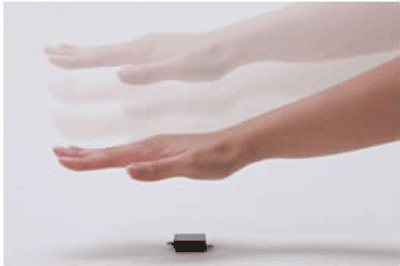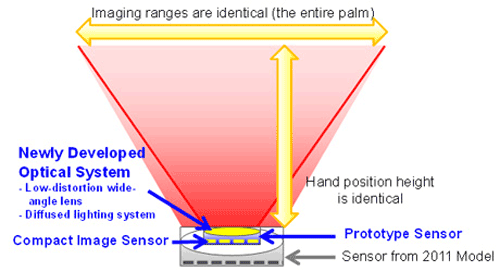Fujitsu makes big advancement with new biometric authentication sensor
Fujitsu has developed the world’s smallest and slimmest palm vein biometric authentication sensor. Its reduced size and simple operation make it the ideal log-in device for the increasingly thin mobile device market.

Fujitsu has created the world’s smallest biometric authentication sensor.
So, how thin is “world’s thinnest”? Try 5 mm thin. The company was able to achieve the reduced size by upgrading its 2011 model with a new design, image sensors, and optical electronics.
What’s worth noting here is that even though their sensor is close to half the size of competing models, the Fujitsu biometric sensor preserves the same level of performance as the models already on the market. For this reason, the technology will likely see a seamless transition to today’s mobile devices, especially tablets and slate PCs, which are steadily becoming thinner and thinner.
Success in this regard will greatly help expand the range of applications for which the technology is used.
Background
Biometric authentication technologies make use of a user’s biological information as a means of verifying an individual’s identity. The field has as a whole has seen a surge in popularity in recent years, as it provides perhaps the most effective means for prevention of damage caused by information leaks and identity fraud at companies and financial institutions.
Fujitsu’s biometric authentication technology, in particular, is based on the vein patterns found in a user’s palm. There are several advantages associated with this approach, including higher authentication accuracy, and the fact that measurement of data from inside the body is more difficult for an imposter to falsify.
The company has seen success with this technology, having already commercialized a non-contact palm vein authentication system called “PalmSecure.” It’s used by banks to authenticate customers, as a means for computer log-in with various companies, and also as a room-entry / exit management system for various businesses.
Last year, Fujitsu developed and commercialized a sensor that featured a smaller and thinner footprint than its previous models. Users in the business world found it particularly helpful when incorporated into their slate PCs and tablets.
But Fujitsu soon discovered that as the devices in the aforementioned markets continue to get thinner, so too must their sensors.
Fujitsu’s smaller, thinner biometric authentication sensor
The team at Fujitsu Laboratories used a compact and low-cost image sensor to achieve an overall reduction in size and thickness of the palm vein sensor. They also developed a unique technique for correcting the quality of images captured by the sensor.
More specifically, the Fujitsu Lab team developed a new, low-distortion, wide-angle lens that offers a field of view equivalent to that of existing sensors, no matter its size and thickness. A diffused lighting system is also included as a means of providing the user with a better, more uniform luminance distribution. This extra piece of technology ensures that the new sensor will be able to capture a consistent, high-quality image. This, in turn, makes it highly compatible for authenticating data from existing palm vein sensors. It also means the sensor can be seamlessly housed in the slot where existing fingerprint sensors have been installed, and easily integrated into mobile devices, too.

Features of Fujitsu’s newly developed optical system.
All of this new technology and yet it’s still the smallest sensor on the market! In fact, compared to Fujitsu’s palm vein authentication sensor product that went out May 2011, the sensor’s volume has been reduced by a jaw-dropping 80%.

5mm ultra-compact palm vein authentication sensor.
Outlook
The team at Fujitsu Laboratories will continue to perform some R&D on the technology, all the way leading up to the commercialization of the ultra-small, super-thin palm vein authentication sensor. The goal is to bring it to the growing market of miniature devices capable of supporting them as quickly as possible. ■
Via: Fujitsu
Advertisement
Learn more about Electronic Products Magazine





